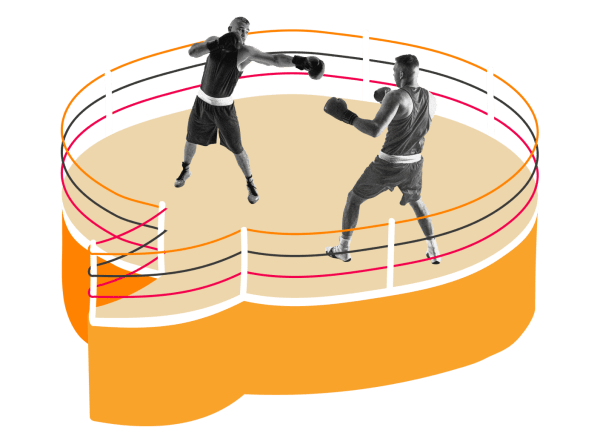The last decade has seen a massive shift in how companies manage their people.
Traditional HR was always an admin-heavy role, focused on finding, screening, recruiting, and training candidates while also managing compensation and benefits. But the modern HR function has evolved into so much more, and today’s HR professionals, especially at small and medium-sized businesses (SMBs), face more pressure than ever.
Many companies have embraced this shift by investing in their HR teams, transforming them into people-first teams. These teams are tasked with developing and implementing strategies that drive employee experience, recognition, company culture, and professional development to meet ever-changing business demands.
Forward-thinking HR professionals are leading the transformation of their field and harnessing an explosion of innovative HR tech to elevate their impact. By managing and prioritizing people, collecting and collating critical data, and scaling HR operations in growing businesses, today’s HR pros are redefining what HR can achieve.
<<Explore the pros and cons of HR platforms vs. point solutions. Download the free guide now.>>
The current wave of new people technologies supports their efforts, empowering them to drive a people-first approach at every level of the business.
This is why HR tech consolidation, aka choosing the right HR tech stack—whether it’s a human capital management (HCM) suite or a mix of point solutions—is a crucial decision. And while implementing an HCM that integrates multiple HR functions is often the most efficient approach (more on that later), the HCM vs. point solution debate is not a simple one.
So, let’s break it down by taking a closer look at:
- The advantages and disadvantages of HCMs
- The advantages and disadvantages of point solutions
- Comparing HCM solutions to point solutions
Let the debate begin!
HR tech for people management
Let’s start with the basics.
Wearing many hats is part of the job for modern HR professionals, particularly in SMBs. Fortunately, a wide range of HR tech tools is available to support them in organizations of all sizes.
Today, HR tools generally fall into two main categories:
- Point solutions. These tools are designed to solve specific HR challenges, like performance management, payroll, benefits administration, or employee engagement.
- HCM suites (or platform solutions). These provide a comprehensive foundation of tools that optimize workflows, centralize data, and simplify HR processes across the employee lifecycle. Many modern HCMs also integrate with point solutions, ensuring a unified HR tech stack.
The best HCMs go beyond integrations—they empower organizations to scale as they grow. Their modular features allow you to adapt to evolving business demands and ensure the platform keeps pace with the organization’s development.
That’s why it’s important to consider your current and future needs when you think about building your HR tech stack. For example:
- To address immediate priorities, a small company might opt for an affordable point solution, such as a payroll system with basic HR capabilities
- As the business scales, this setup may become limiting, requiring multiple standalone solutions to make up for the gap in functionality
Think long-term. Where do you want your business to be in the next 3-5 years? An integrated HCM suite may empower you to get there more easily (and within budget) while providing the flexibility and scalability to meet evolving goals.

HCM suite: Advantages and disadvantages
Advantages of HR platforms
One of the key advantages of an HCM is its ability to act as a single source of truth for your people data. Instead of juggling multiple tools for different HR needs, an HCM allows you to consolidate all HR data and processes into one centralized system.
An HCM’s centralization offers several benefits:
- Holistic insights. You can manage and analyze payroll, performance, and other data from one platform to get insights from high-level overviews of your organization to detailed, granular information.
- Elimination of data silos. Storing all your people data in one place ensures consistency, improves data quality, and makes information accessible to stakeholders across the entire business.
- Simplified processes. Integrated workflows save time and reduce errors, allowing HR professionals to focus more on strategic initiatives instead of administrative tasks.
For scaling businesses, many HR platforms offer the flexibility to start small and grow as your needs evolve. You can invest in a core package to address immediate priorities, then add modules as your organization grows, which helps you manage costs while giving you the tools you need when you need them.
For example, a smaller company may not need a talent management module at first. But as your business expands and your people strategy evolves, you can add talent management and other tools to support your growing team.

Benefits beyond HR
Implementing a single HR platform doesn’t just make life easier for HR. An HCM benefits employees across the organization with rich self-service features. Instead of juggling multiple tools for different tasks—like performance reviews, surveys, or vacation requests—your people can log into one platform for everything. Fewer logins mean less frustration, better engagement, and a better experience for your whole team.
It gets even better: More engagement leads to richer data for people teams, line managers, and executive leadership. With centralized insights, you can plan better programs and business strategies, creating a win-win cycle of organizational efficiency and impact while staying people-focused.
If you or your team encounter any issues, a single HR platform also means just one technology partner for troubleshooting and maintenance. This saves valuable time and eliminates the headaches of chasing multiple service providers—a major plus for busy HR teams.
Disadvantages of HR platforms
As powerful as HCMs can be, they do come with a few challenges. They often require a sizeable upfront investment and a longer implementation timeline compared to point solutions. Additionally, while an HR platform’s capabilities may be wider in scope and able to solve multiple pain points, some may not offer the specialized functionality of best-of-breed point solutions.
<<Explore the pros and cons of HR platforms vs. point solutions. Download the free guide now.>>
Point solutions: Advantages and disadvantages
Advantages of point solutions
Point solutions can be a quick fix for businesses looking to address specific HR challenges. They’re typically fast to implement and offer deep, specialized functionality in one area, such as payroll or performance management.
Smaller companies and those with limited budgets may find point solutions to be a more affordable initial option than comprehensive HCM platforms. As companies scale, they can add individual point solutions to their toolkits as new challenges arise.
Disadvantages of point solutions
The limitations of point solutions often become clearer as businesses expand. Since point solutions only solve specific issues, organizations may need to implement many different tools to meet their growing needs. The costs of this can add up quickly (in terms of time and budget) and often exceed the investment the company would make in a unified HCM suite.
Managing multiple tools is also more complex for everyone across the organization. For example, a company might use one system for tracking time and attendance, another for requesting time off, another for performance management, and another one for collaboration. Relying on so many platforms can create confusion, disrupt efficiency, and harm employee engagement.
Additionally, point solutions often lack integration, leading to fragmented workflows and siloed data. People may also struggle with multiple logins and passwords, which can increase security risks. For HR teams, managing numerous vendors and troubleshooting issues across so many platforms can quickly become an overwhelming and time-consuming burden.
But the biggest challenge of all is the lack of a single source of truth. With data scattered across systems, maintaining consistency and integrity becomes difficult. Teams may waste valuable time searching for critical information, and data accuracy can suffer without regular updates or proper integrations.
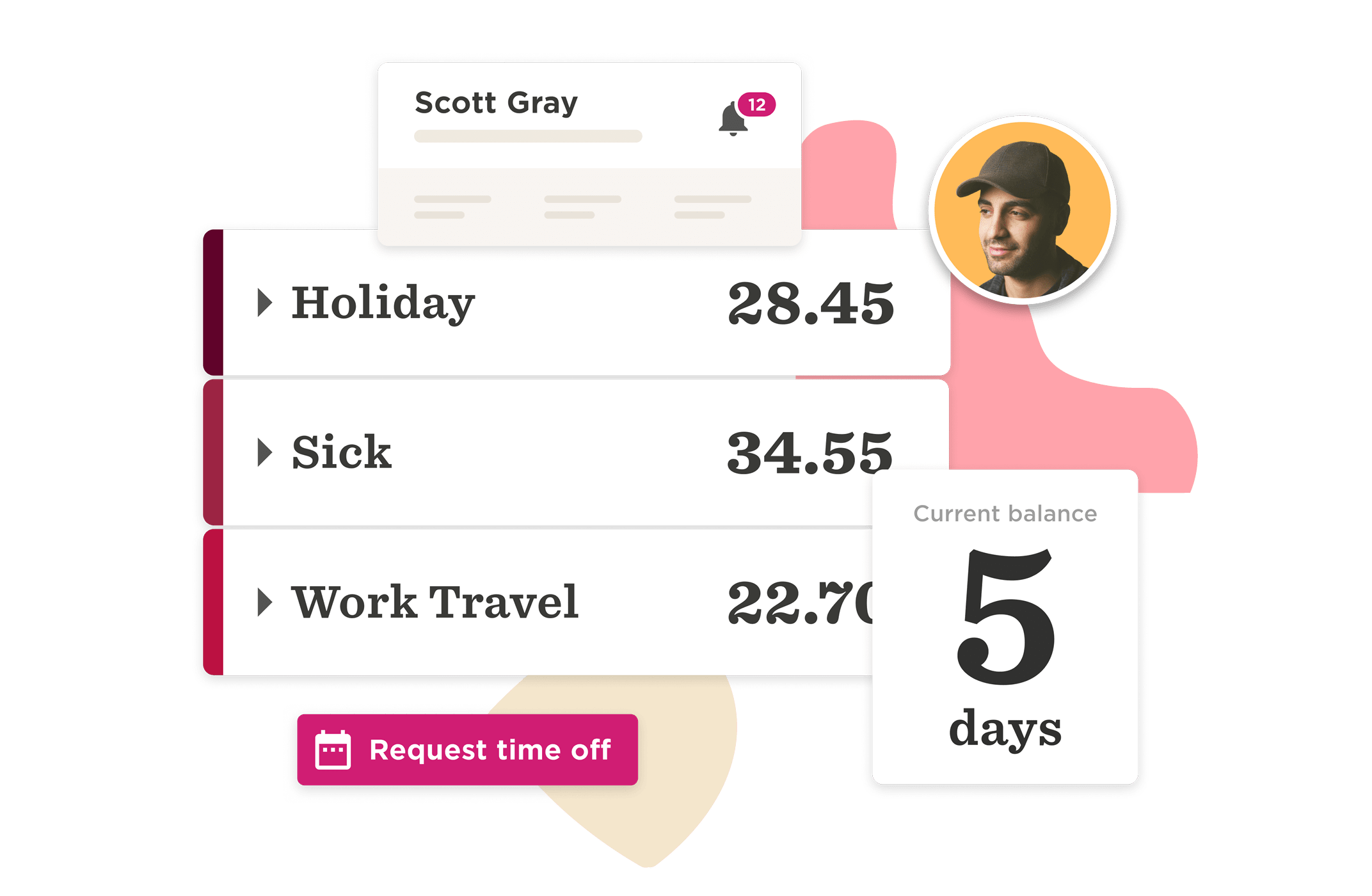
HCM vs. point solutions
| HCM suite | Point solutions |
| May require a sizable investment upfront but offers the flexibility to add more modules as you grow | Adding point solutions as you scale can be costly |
| HR teams can manage all daily functions through one tool, simplifying workflows and reducing complexity | HR teams rely on multiple tools that may not integrate with each other to perform different tasks |
| Provides a single source of truth for all people data | Managing people data in various locations is challenging and causes data silos and inconsistencies |
| One single login and password required | Multiple logins and passwords can create frustration and increase security risks |
| One vendor for troubleshooting and maintenance | Troubleshooting and maintenance often involve coordinating with multiple vendors, which can be time-consuming |
No debate: The right choice for your HR needs
When it comes to managing HR, the tools you choose today will shape your organization’s future. While a point solution might seem like a fast and affordable fix, scaling your growing business with multiple tools can quickly become costly—not just financially, but in terms of time, complexity, and efficiency.
Comprehensive HR platforms empower HR professionals to focus on what matters most in a business: people. These platforms provide a single source of truth for people data, simplify processes across the employee lifecycle, and support teams across geographies with customizable modules and global-ready features.
HCMs serve as the foundation of flexible and integrated HR tech ecosystems. Their smooth integrations with your favorite tech tools, deep functionality, and ability to scale alongside your organization make them the ultimate HR tech solution to meet today’s needs and grow with you tomorrow.
Debate closed.
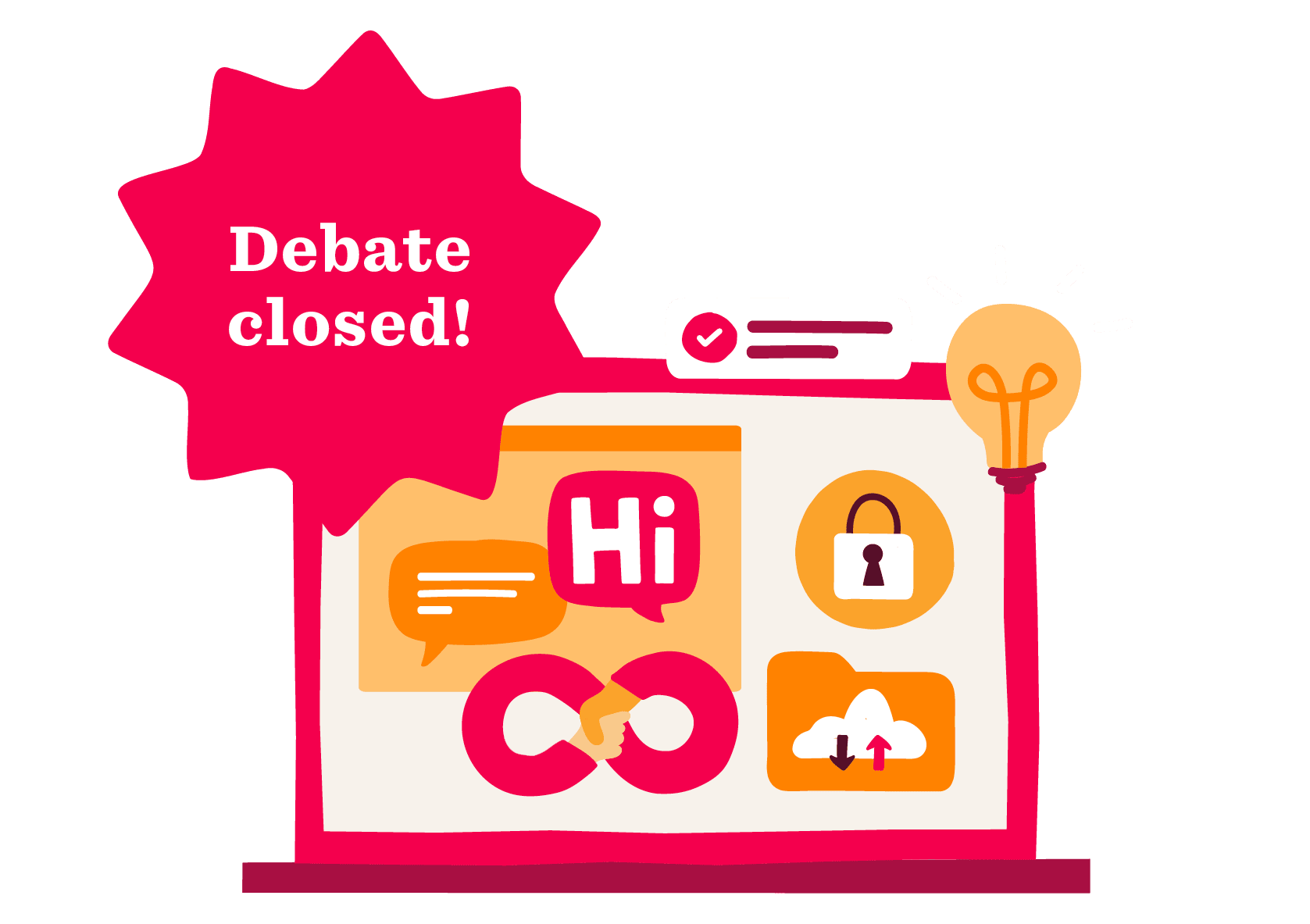
Recommended For Further Reading
Introducing Bob: The HCM for everyone
Choosing the right HR tech is a decision that shapes the future of your business. Bob is more than an HCM—it’s a flexible, scalable platform that grows with your organization while sitting at the heart of your HR tech ecosystem.
Designed for modern, growing companies, Bob simplifies daily processes, centralizes people data, and supports global teams with features like multi-language capabilities, customizable time-off policies, and advanced people analytics. The Core HR module provides a comprehensive foundation for managing your people and building an engaging, inclusive culture.

Key features include:
- Automated workflows and task lists for simplifying day-to-day HR processes
- Advanced people analytics with KPI dashboards for metrics like headcount, growth rate, turnover, and DE&I
- A centralized document hub for storing and managing all your people docs
- An engaging homepage for company updates, celebrating milestones, and recognizing accomplishments
- Org charts and clubs to help teams connect and understand the company’s structure
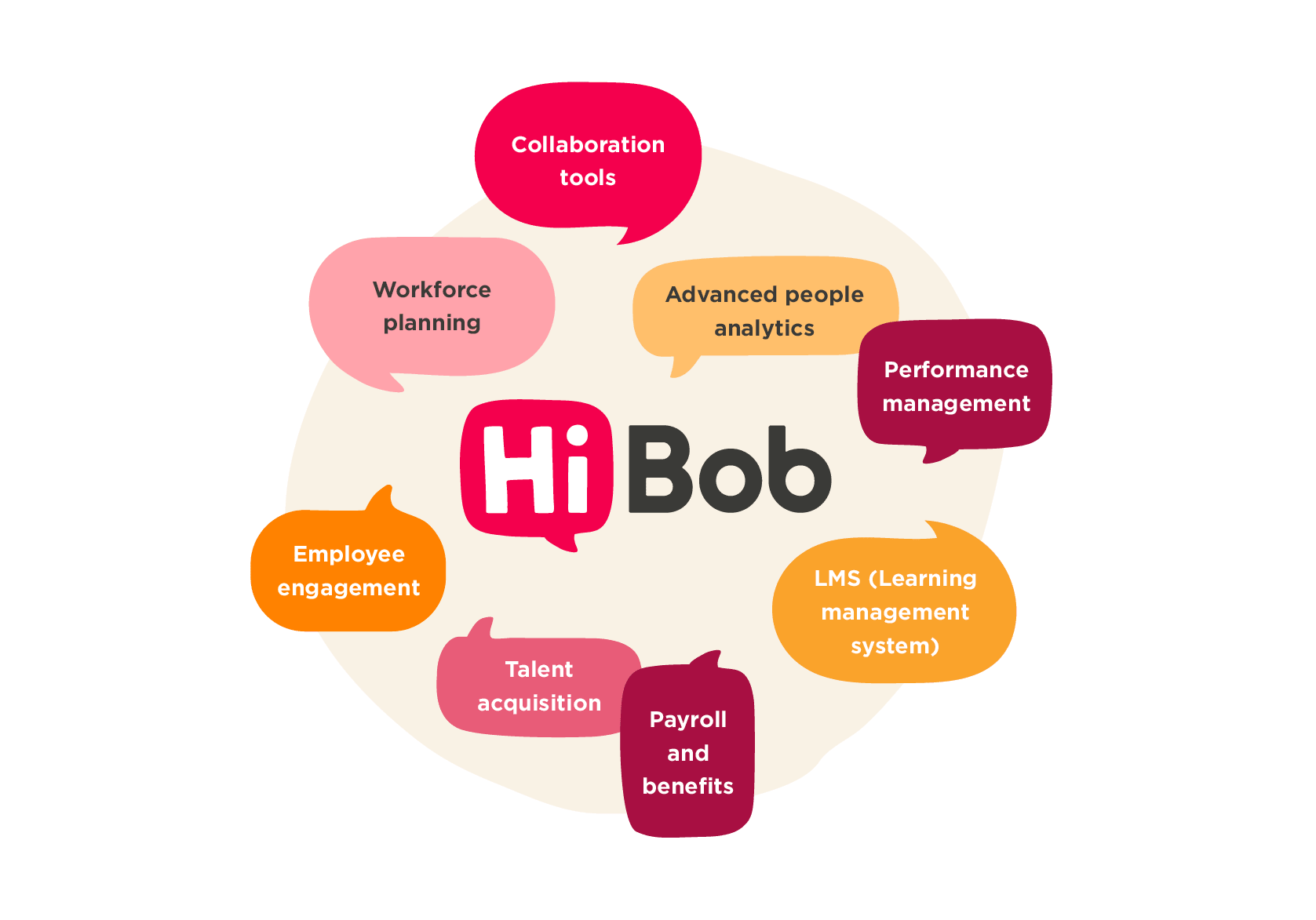
Bob also offers additional modules, including Performance Management, Workforce Planning, Compensation Management, Payroll Hub, Time and Attendance, Your Voice for anonymous reporting, Surveys, Hiring, and integrations with tools like ATS and LMS platforms. This flexibility empowers HR teams to customize their HR tech ecosystem, scaling and evolving as their needs grow.
With its robust features and seamless integrations, Bob helps you create a people-first HR strategy, making it the cornerstone of a thriving, future-ready workforce.
What our customers say: testimonials
HiBob supports over 4200 customers across a diverse range of industries and business sizes. They’ve each chosen Bob as their HCM for different reasons, whether it’s for the platform’s flexibility, multi-functionality, ability to empower people leaders with centralized HR processes, or a combination of them all.
But don’t take it from us. Hear what our customers have to say for themselves.
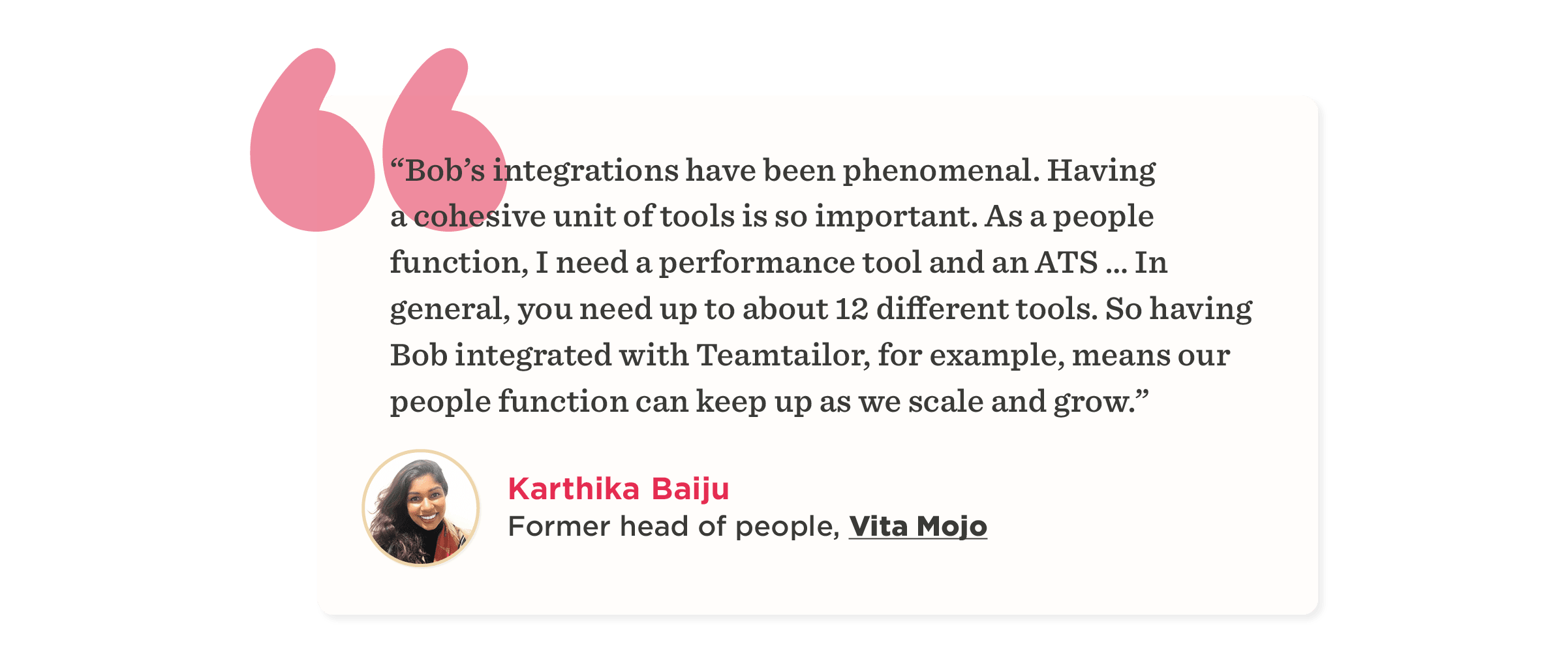
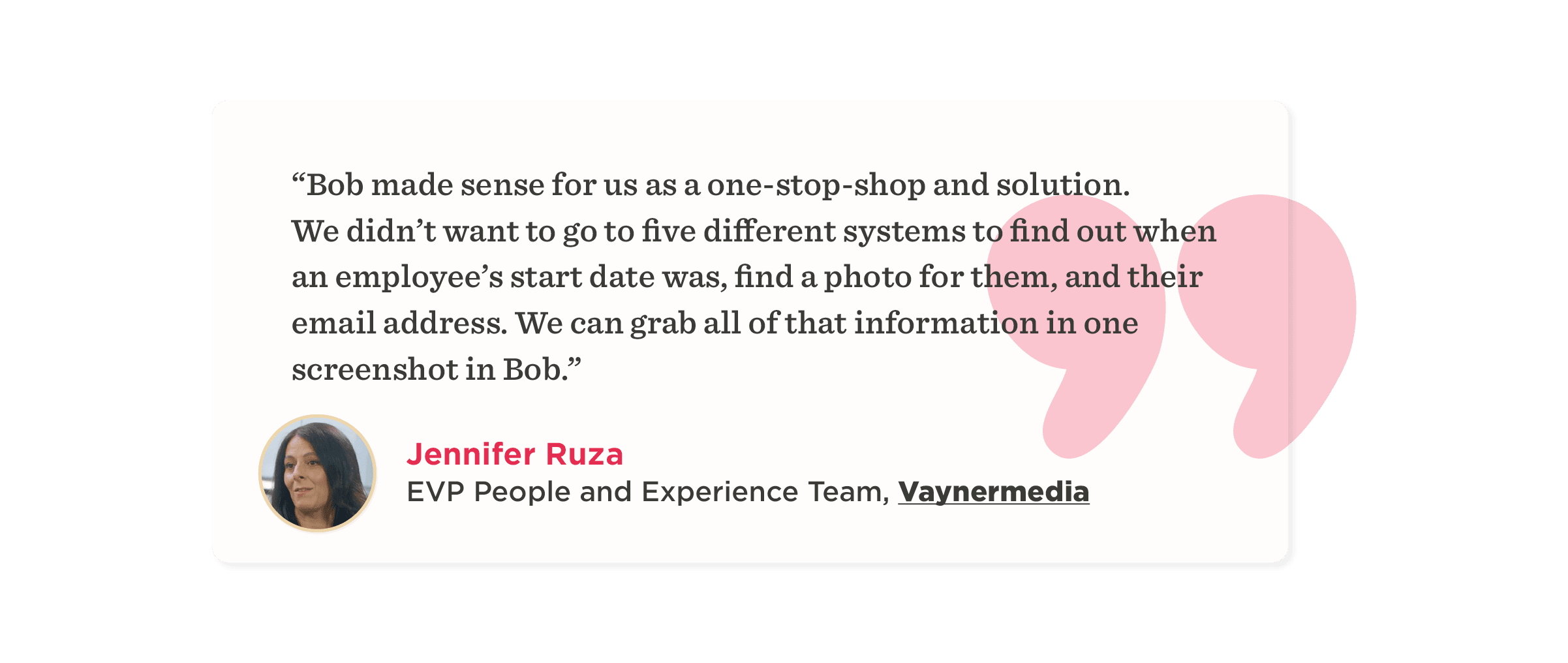
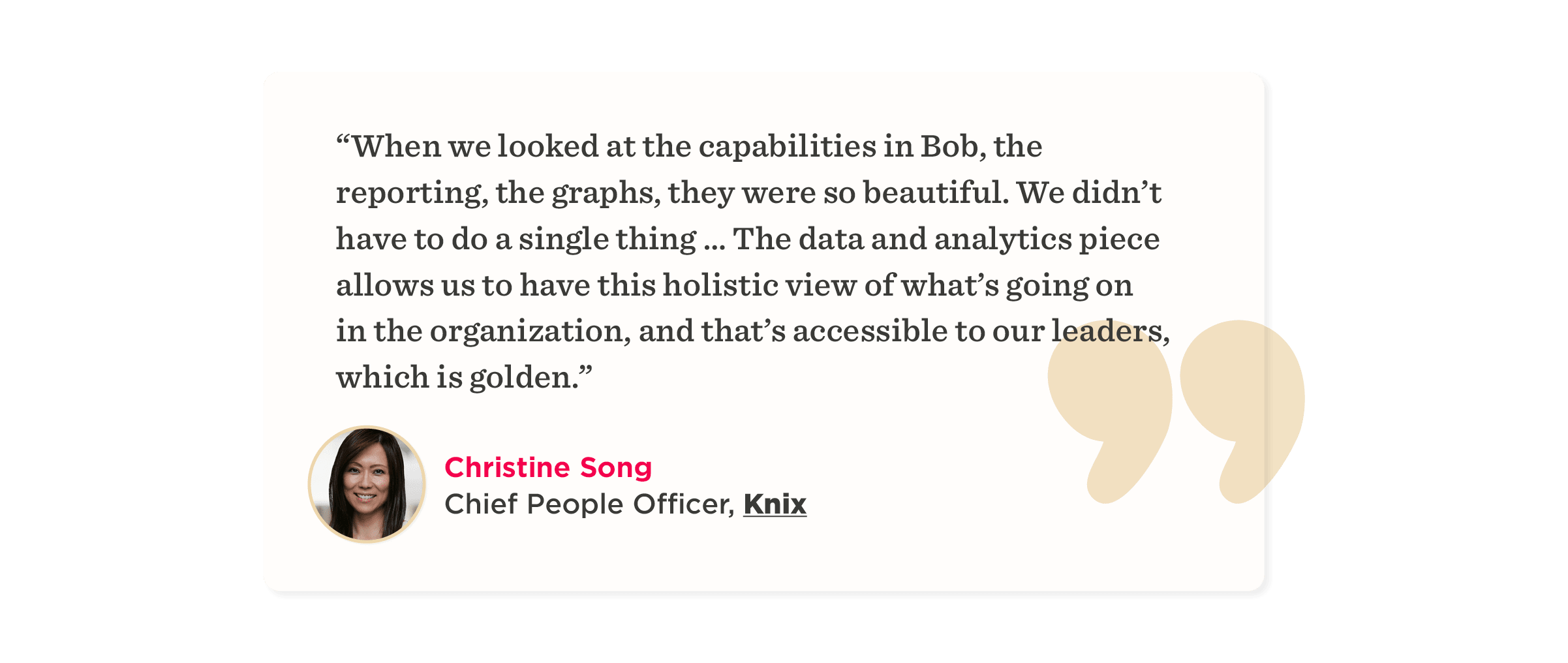
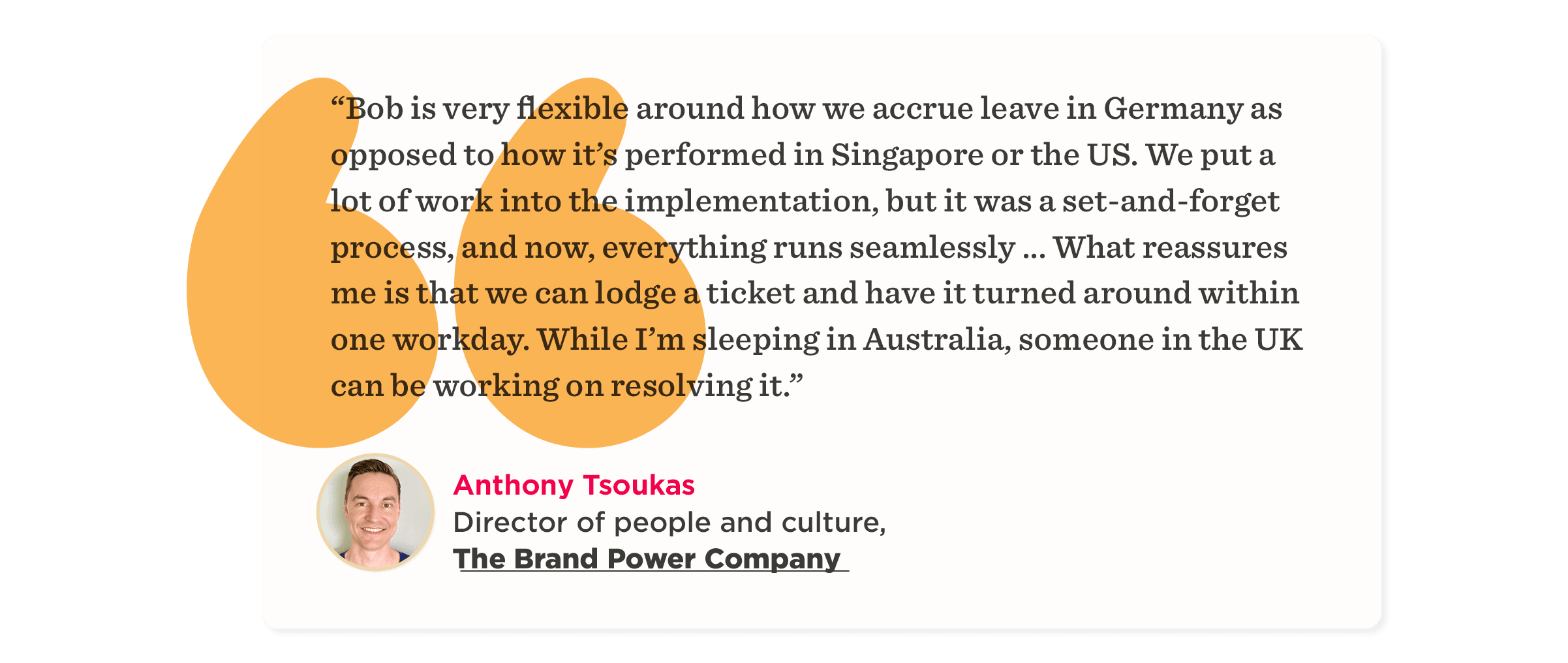
<<Explore the pros and cons of HR platforms vs. point solutions. Download the free guide now.>>
